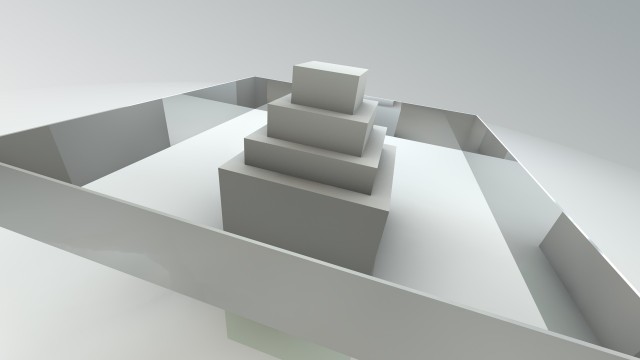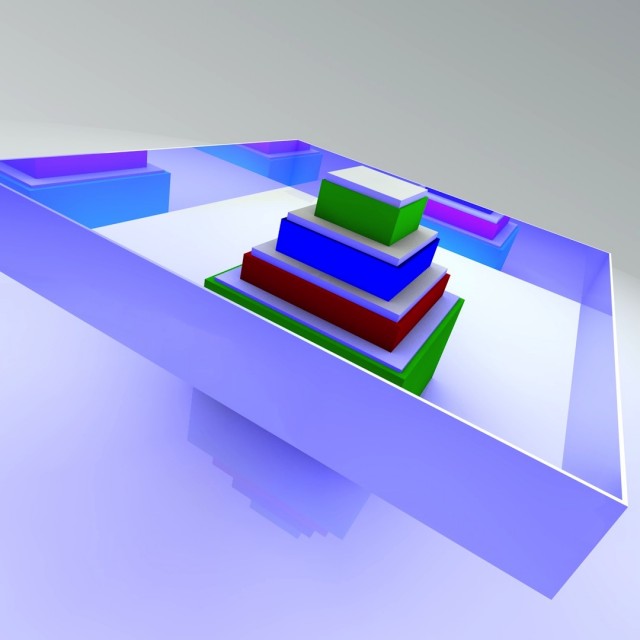
Geometry and process come together for a new take on techno, with Nicolas Bougaïeff. Dr. Bougaïeff explains everything to CDM – and with a few nods to how you might use this in your own work. Images courtesy the artist.
Got a doctorate?
Got a doctorate in techno?
Got a techno track with a 12-tone row?
Artist and researcher Nicolas Bougaïeff (also of developer Liine) shares his latest work with CDM. It’s about the track, yes, about the music video, about techno and dancefloors in some sense. But it’s also about process: Nicolas shares some of the way the machinery of his track was built, in its realization in software, in musical composition, and underlying research.
And we also get a terrific music video that helps render some of this geometric theoretical thinking, courtesy Berlin-based motion graphics artist Vicetto. (See also the stills here.)
Nicolas writes:
The Decompress EP is focused on structure and process, an outgrowth of my PhD research on minimal techno and Plastikman. Decompress might be considered some sort of meta-music, it’s music about music while remaining constrained to a dancefloor techno format. I was very interested in strict process and instruction pieces, think early Steve Reich, Philip Glass, or La Monte Young during his Fluxus period.
The title track, “Decompress,” borrows the concept from Steve Reich’s “Four Organs” (1970) and adapts the structure to a techno format. In the original, four organs each repeat a short chord, once every few beats. On each repetition, slowly, one of the notes is held for a slightly longer time than the others. Eventually, the individual notes get so long that the overall texture has transformed from a short chord to long textures. In Decompress, the four notes of an Ableton Operator synth patch are individually and progressively delayed until they form an arpeggio in perfect sync with the beats.
“Decompress”:
“Four Organs”:
Max for Live, in action:
Technically speaking, enacting this process presented somewhat of a challenge. I had to create four MIDI tracks, one for each note of the chord. You can see how the tracks are setup in first screenshot. Next, I had to adapt a MIDI delay from The Covert Operators. I had to be able to smoothly increase the delay until hitting the exact quantised value. You can see in the second screenshot; there is a percentage value at the top and a quantised value at the bottom. Finally, a Max for Live patch on the main Operator track acts as a master delay, letting me control the delays for all notes with a single knob. In the last screenshot, you can see the maximum values for all the delays, I adjusted these to match the overall swing value.
“Tone Row” is about merging serial music and dancefloor techno. It was no stretch of the imagination to consider that serialist composition techniques might a generous source of techno track ideas. The main riff is a direct quotation of the tone row from Anton Webern’s Concerto Op. 24 (1934). The music of Webern, along with his colleague Berg and mentor Schoenberg, together form what is known in classical music as the Second Viennese School, an aesthetic that still clashes with mainstream taste today. Interestingly though, atonal melodies are often central to minimal and acid techno. Webern’s tone row provides the melodic material here, first in prime form and then followed by various simple transformations.
http://en.wikipedia.org/wiki/Tone_row
Jacques Attali is a french economist, author and musician. He wrote a seminal text on 20th century musical thought called ‘Noise: A Political Economy of Music’. I read and re-read both the original 1977 edition and the updated 2001 edition, written post facto of the internet revolution. Loosely inspired by these themes, this track was written while pondering the meaning of music in the age of digital reproduction. It’s less of an explicit demonstration, more of free association.
http://en.wikipedia.org/wiki/Noise:_The_Political_Economy_of_Music
Finally, my good friend Ambivalent provided a solid dancefloor remix. I’ve known Ambivalent since early 2010, in the context of the association between my company, Liine, and his then-label Minus. We worked on a few projects together, namely I developed a custom performance oriented step sequencer for his DJ sets that we released as free Lemur content called Ambivalent Beats. I am very proud to have him on board for this release, he delivers here his own spin on Decompress.
http://liine.net/en/products/lemur/premium/ambivalent-beats/
Thanks, Nicolas, for sharing these reflections and music – plenty to digest, plenty of avenues to explore. We’ll be listening, and playing. And I hope to share more of his doctoral research into live performance soon.
If you want to read it, in the meanwhile:
http://nicolasbougaieff.com/thesisAN APPROACH TO COMPOSITION BASED ON A MINIMAL TECHNO CASE STUDY: AN ANALYSIS OF LIINE AND PLASTIKMAN LIVE






